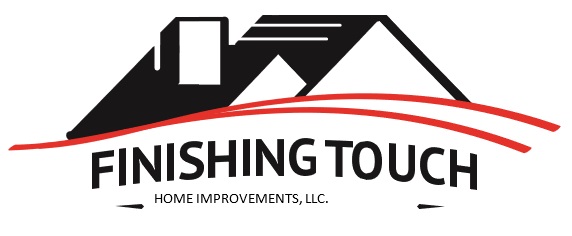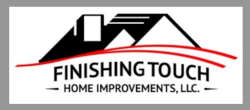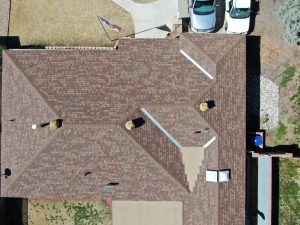SHINGLE ROOFING
Shingle Roofing Albuquerque NM
Give Finishing Touch Home Improvements, LLC a Call at 505-489-6855 to Schedule an Appointment for a Shingle Roofing Quote for Your Albuquerque Home Today!
When the need for a new roof arises, homeowners have many options and styles from which to choose. Those unfamiliar with residential roof systems can be quickly overwhelmed with the numerous materials that are available. The information here will help readers understand the form and functionality of one of the most popular residential roofing materials in North America — shingle roofing. There are multiple reasons for its popularity, including aesthetics, product performance, ease of installation and value.
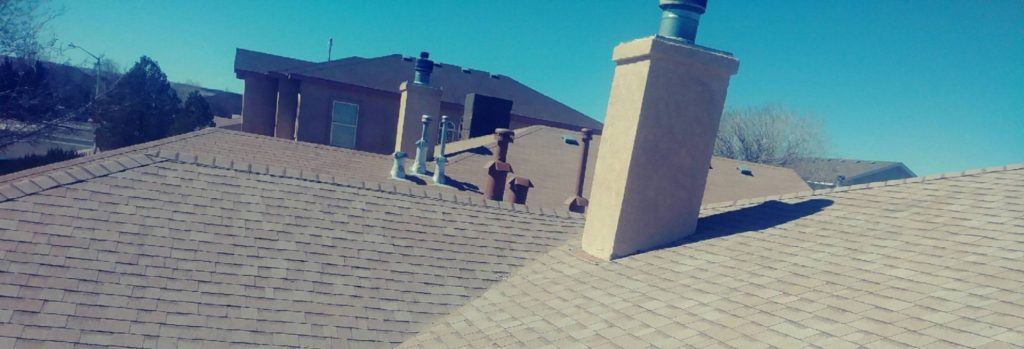
How do I pick the right shingle roofing system or product for my home?
The first recommendation is to follow the advice of an experienced contractor. Most professional contractors are accredited by shingle manufacturers and can guide you through the roofing process. This information will provide you with the basic information needed to have an intelligent conversation with contractors.
It is important that homeowners understand the elements of their asphalt shingle roofing systems.
Composition of an asphalt shingle
While there are specialty shingles that possess unique composition, the following core materials are found in all asphalt shingle types:
- Fiberglass mat: The backbone of the shingle, this high-strength reinforcing material offers the ideal qualities needed for handling and durability.
- Asphalt: The primary purpose of asphalt is to serve as a water-shedding agent, and to hold the granules in place. It makes up a significant part of the shingle’s composition.
- Fillers (or mineral stabilizers): These finely-ground materials are added to the asphalt during the manufacturing process to help increase the asphalt’s resistance to fire, and can improve weathering, flexibility and durability.
- Granules: These ceramic-coated, crushed rock particles coat the ‘face’ of the shingle. Granules are what provide the coloring to shingles, and they also protect the shingle’s asphalt from degradation that would occur from prolonged exposure to UV light.
- Back surfacing: This is a fine mineral material that is applied to the back of the shingle. Back surfacing allows shingles to be manufactured and stored with fewer sticking to the machinery or to each other.
What different types of asphalt shingles are available?
Asphalt shingle manufacturers offer an impressive range of design options which can be grouped into the following three categories:
Premium/designer shingles – This offering typically has a high-end aesthetic in either shape and/or color options. Many of these products mimic the appearance of shake, tile or slate. In addition to offering top-of-the-line aesthetics, this category can also contain shingles that have increased performance characteristics, like impact resistance.
Laminated shingles – The most common type of asphalt shingle, the two-piece laminated shingle offers dimensionality and aesthetics. Laminated shingles are also called “architectural,” “dimensional” or “dragon tooth.”
3-Tab shingles – This is the basic type of asphalt shingle. It is composed of a single layer with cut-outs forming 3 individual tabs. The 3-tab asphalt shingle is the least expensive asphalt shingle product, common to new construction.
Important attributes of a shingle
While the appearance of a shingle is important, there are other properties which must be taken into consideration when planning to have your roof replaced.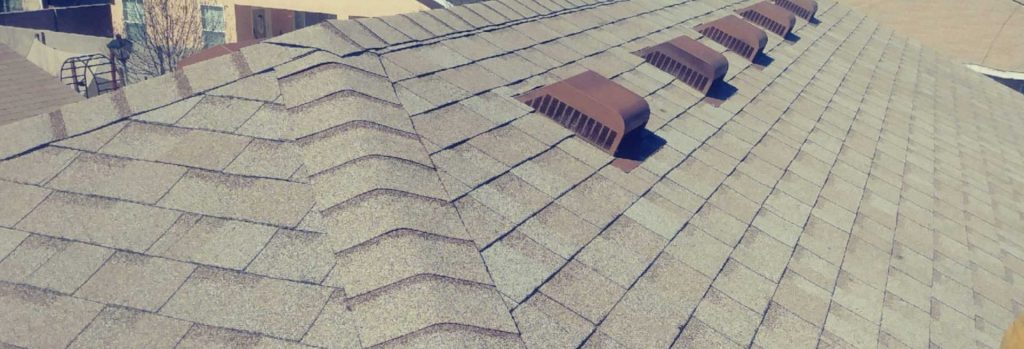
Wind resistance
All asphalt shingles are wind resistant; however, there are different levels of wind resistance. Proper nailing, fastener pull-through resistance and strong sealant bond strength provide wind resistance.
Asphalt shingles are tested to determine their wind resistance. Two test standards are commonly used.
- ASTM D3161, “Standard Test Method for Wind Resistance of Asphalt Shingles (Fan Induced Method).”Class F is the highest rating.
- ASTM D7158, “Standard Test Method for Wind Resistance of Asphalt Shingles (Uplift Force/Uplift Resistance Method).” Class H is the highest rating.
Impact resistance
Impacts on asphalt shingles (e.g., from hail) can damage them. Underwriters Laboratory (UL) Standard 2218 is a test method for evaluating impact resistance. When tested to UL 2218, shingles can achieve an impact-resistance rating from Class 1 through 4, with a Class 4 rating being the highest and best. Some insurance companies may provide premium discounts when shingles are impact-resistant rated at the Class 4 level.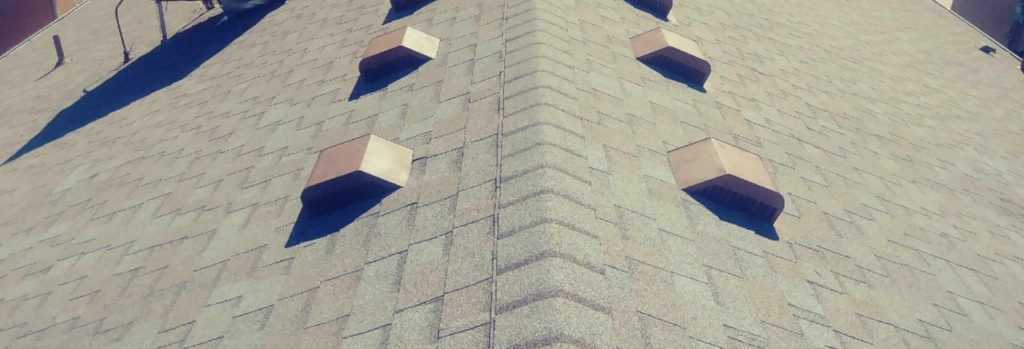
Fire resistance
Due to the materials used in their construction, most asphalt shingle roof assemblies have a Class A fire resistance rating. Fire resistance is based on two test standards: UL 790 and ASTM E 108. There are three levels of fire resistance; Class A is the highest level.
- Class A: Effective against severe test exposure, affords a high degree of fire protection to the roof deck
- Class B: Effective against moderate test exposure, affords a moderate degree of fire protection to the roof deck
- Class C: Effective against light test exposure, affords a light degree of fire protection to the roof deck
Algae resistance
Algae does not damage asphalt shingles, but may affect the appearance of an asphalt shingle roof. Different treatment methods are used to prevent algae growth and the subsequent discoloration that can occur on the roof. Many manufacturers offer AR (Algae Resistant) shingles, which have a special copper composition in their granules, as copper is proven to help control algae growth.
Solar reflectance
Solar-reflective shingles make use of special granules that reflect some of the sun’s energy, helping to keep roof temperatures cooler. This can reduce energy consumption when using air conditioning, especially in hot climates. Residential property owners may also be eligible to receive tax credits, depending on the city or state, for installing solar reflective roofing. The Cool Roof Rating Council (CRRC) manages a system for independently determining solar reflective properties of roofing products. Solar reflectance, thermal emittance and solar reflective index values for CRRC-verified products can be found at coolroofs.org.
Solar-reflective shingles can reduce energy consumption by reflecting some of the sun’s energy and keeping homes cooler.
A whole system approach
In addition to the asphalt shingles, there are other components which also affect the performance of your roof. These components are bundled together as a roof system and consist of:
- Starter strip products: the first row of specially sized shingles, applied at the eaves, needed to help prevent shingle blow-offs.
- Hip and ridge products: shingles designed specifically to cap the hips and ridges on a roof.
- Ventilation: proper ventilation (consisting of balanced intake and exhaust) helps extend the service life of an asphalt shingle roof by reducing the attic temperature (ventilation exhausts warm air) and removing condensation in your attic space. Using proper ventilation and meeting Department of Energy recommendations for attic insulation can help reduce ice dam build ups.
- Underlayment: sheets of water-resistant material that provide a secondary protection from water intrusion. Underlayment is installed between the roof deck and the shingles. Many underlayments are slip resistant to provide safer working conditions for roofers.
- Ice and water barriers: self-adhered underlayment that helps prevent leaks from wind-driven rain and ice dams in vulnerable areas, such as eaves, valleys and flashing.
A roof system consisting of the items listed above is highly recommended for increased performance and longevity. Roof system functionality should be discussed in detail with your contractor.
